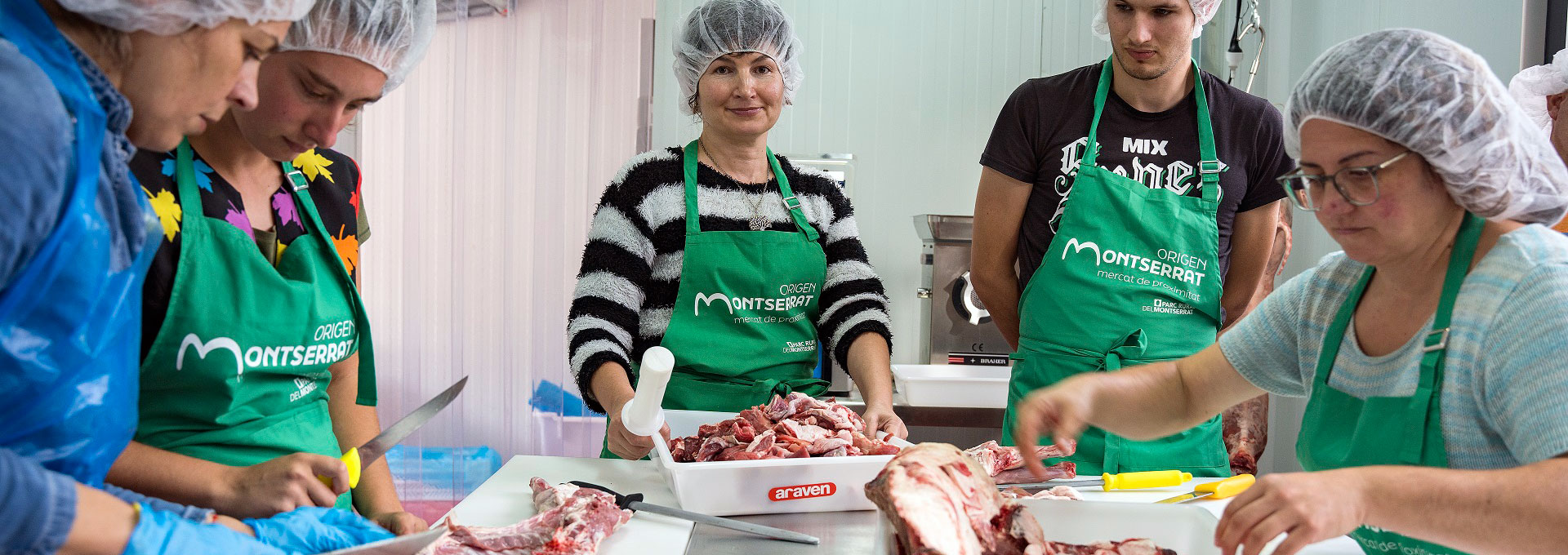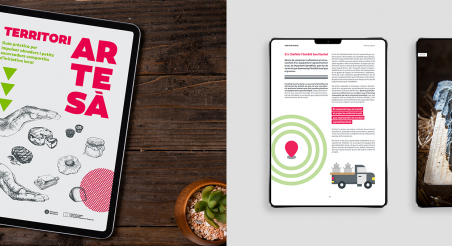The Barcelona Provincial Council has presented a new digital resource to promote artisanal food processing in the province. The handbook 'Artisanal Territory: A Practical Guide to Promoting Shared Food Production Facilities and Small Local Abattoirs', available in Catalan, becomes an essential tool for municipalities wishing to invest in these collective facilities as drivers of revitalisation and innovation.
The publication comprehensively addresses all aspects necessary to establish these spaces locally: from initial feasibility studies to management models, including technical, regulatory and urban planning requirements. Furthermore, it includes examples of successful initiatives and practical resources that facilitate the implementation of these food processing facilities.
The guide is aimed at all regional stakeholders interested in promoting artisanal food production, from farmers and livestock farmers to processors and organisations committed to promoting a more sustainable, healthy and local food production model. The manual explains the multiple advantages of these shared facilities. For entrepreneurs starting their journey who want to test whether their products work in the market, the opportunity to use a shared production facility significantly reduces initial investment and minimises risks. Moreover, as these facilities have all the necessary machinery for food processing, users can experiment with different working methods and types of production to find the most commercially viable options. Additionally, the fact that both the space and tools strictly comply with current regulations ensures that their creations meet all required health and quality guarantees. Finally, cost savings influence the final price of products, allowing new artisans to offer the highest quality food at affordable prices.
Beyond the physical space and machinery, these facilities often become genuine catalysts that strengthen the local productive fabric. The guide highlights how many food production facilities and small abattoirs offer training programmes in key areas such as food production, business management and marketing, as well as personalised advice for entrepreneurial projects. The shared space also facilitates the creation of synergies between users, promotes the exchange of knowledge and experiences, and can lead to collaborations that strengthen the local economy.
The publication, which includes photographs by Patxi Uriz, is the result of a multidisciplinary collaboration that brings different perspectives on the local food sector. Contributors include Neus Monllor, an agri-social consultant specialising in rural development, generational renewal and local food systems; Anna Roca, a professor at the University of Girona expert in food sector revitalisation; and Sònia Callau, head of the Agricultural Territorial Department at Barcelona Provincial Council. This editorial project has been co-funded by the European Regional Development Fund (ERDF) within the BCN Smart Rural programme.
The 'Artisanal Territory' guide can be downloaded free of charge from the Barcelona Provincial Council Library, where other publications related to agriculture, food and livestock farming can also be found.
Valuing local food
In the past, shared food production facilities and abattoirs were key spaces for maintaining agro-economic activity and the food identities of territories. These facilities, sized to suit the local area, energised rural communities, boosting the work of farmers, livestock farmers and artisanal producers. However, the current food model has become industrialised and homogenised, prioritising mass consumption of low-quality products from distant sources. The recovery of these collective processing spaces thus becomes an essential tool for revaluing local products and preserving the cultural and gastronomic wealth of municipalities.
Given this scenario, the guide proposes various strategies to revitalise local food processing and recover essential facilities to provide citizens with artisanal products. In this regard, it highlights the role of the Shared Food Production Facilities Network (XOC) that the Barcelona Provincial Council has been promoting and managing since 2018. This initiative, developed in collaboration with interested town councils, works to facilitate the diversification of agricultural businesses and support young entrepreneurs in the province's food sector.
Currently, this network of shared food production facilities and abattoirs encompasses a wide diversity of initiatives adapted to the productive specialities of the territory. Some examples include the Lluçanès cheese dairy, the community kitchen at the Òdena Basin Agrarian Park, the Bages horticultural production facility, the Gallecs production facility and the Tagamanent production facility. Additionally, the network also integrates more specific infrastructure such as the meat cutting room at the Montserrat Rural Park, the mobile abattoir in Central Catalonia and the small modular abattoir in Moianès.
For more information about the Shared Food Production Facilities Network, please contact Sònia Callau, head of the Agrarian Territorial Directorate at the Barcelona Provincial Council.




